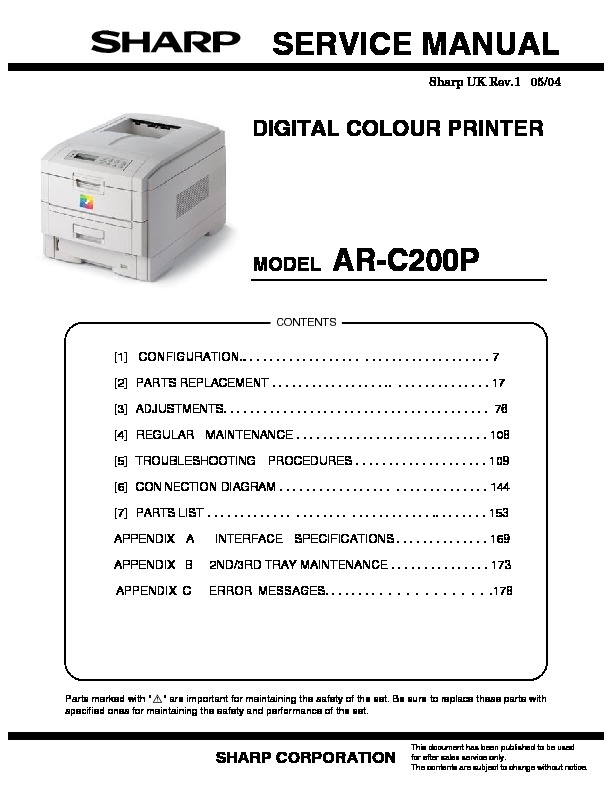
We offer various leasing and purchasing options. From basic printing needs to light production, Sharp has a copier that will fit the needs of your Atlanta business. Sharp copier sales, service, and repair in metro Atlanta.
I have a TP-Link Archer C7 wireless router and Xfinity 130Mps internet service.History Mathematical notation A mathematical notation for manipulating arrays was developed by Kenneth E. 5 Interpretation and compilation of APLMy setup is a Sharp Aquos LC-60LE633U TV and a Sony STR-DN1030 receiver. 35 Color Copies Easily located on Allisonville Road in Fishers, we provide graphic design and print services for business, personal, school and d&233 cor. Order Senior Celebration items here Home of the. Sharp is well-known for dependable multifunction printers and printer accessories.Sharp Printing is a premier print and graphic design shop, proudly serving the local area since 1983. 1.2 Development into a computer programming languageSoutheast Wisconsin Managed Print Services, Repair, Maintenance and Supplies.


Abrams of Stanford University joined the team at IBM Research, they continued their prior work on an implementation programmed in FORTRAN IV for a part of the notation which had been done for the IBM 7090 computer running on the IBSYS operating system. Lawrence asked Iverson and his group to help use the language as a tool to develop and use computers in education. Lawrence who had new duties with Science Research Associates, an educational company bought by IBM in 1964.
Keycaps could be placed over the normal keys to show which APL characters would be entered and typed when that key was struck. This was used on paper printing terminal workstations using the Selectric typewriter and typing element mechanism, such as the IBM 1050 and IBM 2741 terminal. Hardware A programmer's view of the IBM 2741 keyboard layout with the APL typing element print head insertedA key development in the ability to use APL effectively, before the wide use of cathode ray tube ( CRT) terminals, was the development of a special IBM Selectric typewriter interchangeable typing element with all the special APL characters on it. The system was later adapted for a time-sharing system and, by November 1966, it had been reprogrammed for the IBM System/360 Model 50 computer running in a time sharing mode and was used internally at IBM. Like Hellerman's PAT system earlier, this implementation did not include the APL character set but used special English reserved words for functions and operators. The basis of this implementation was described in detail by Abrams in a Stanford University Technical Report, "An Interpreter for Iverson Notation" in 1966, the academic aspect of this was formally supervised by Niklaus Wirth.
Watson Research Center, the home of APL, in Yorktown Heights, New York. This was necessary because the APL character set was much larger than the 88 characters allowed on the typing element, even when letters were restricted to upper-case (capitals).The first APL interactive login and creation of an APL workspace was in 1966 by Larry Breed using an IBM 1050 terminal at the IBM Mohansic Labs near Thomas J. An example is the grade up character, which had to be made from a delta (shift-H) and a Sheffer stroke (shift-M). Many APL symbols, even with the APL characters on the Selectric typing element, still had to be typed in by over-striking two extant element characters. Iverson cited Falkoff as the inspiration for the idea of using an IBM Selectric typing element for the APL character set. Falkoff and Iverson had the special APL Selectric typing elements, 987 and 988, designed in late 1964, although no APL computer system was available to use them.
Sharp Printer Service Code In Which
The ability to programmatically communicate with the operating system for information and setting interpreter system variables was done through special privileged "I-beam" functions, using both monadic and dyadic operations. First introduced in 1966, the APL\360 system was a multi-user interpreter. Somewhat later, as suitably performing hardware was finally growing available in the mid- to late-1980s, many users migrated their applications to the personal computer environment.Early IBM APL interpreters for IBM 360 and IBM 370 hardware implemented their own multi-user management instead of relying on the host services, thus they were their own timesharing systems. Additional improvements in performance for selected IBM System/370 mainframe systems included the APL Assist Microcode in which some support for APL execution was included in the processor's firmware, as distinct from being implemented entirely by higher-level software. It would run in as little as 8k 16-bit words of memory, and used a dedicated 1 megabyte hard disk.APL gained its foothold on mainframe timesharing systems from the late 1960s through the early 1980s, in part because it would support multiple users on lower-specification systems that had no dynamic address translation hardware. APL was first available in 1967 for the IBM 1130 as APL\1130.
Sharp Printer Service Series Mainframe Computers
In 1974, student Alan Stebbens was assigned the task of implementing an internal function. At the time, Sperry had nothing. Hagerty directed the implementation of the University of Maryland APL interpreter for the 1100 line of the Sperry UNIVAC 1100/2200 series mainframe computers. In the 1980s, the VSAPL program product enjoyed wide use with Conversational Monitor System (CMS), Time Sharing Option (TSO), VSPC, MUSIC/SP, and CICS users.In 1973–1974, Patrick E. In the mid-1970s, the IBM mainframe interpreter was even adapted for use on the IBM 5100 desktop computer, which had a small CRT and an APL keyboard, when most other small computers of the time only offered BASIC.

Sharp Associates, first as a timesharing service in the 1960s, and later as a program product starting around 1979. With the advent first of less expensive mainframes such as the IBM 4300, and later the personal computer, by the mid-1980s, the timesharing industry was all but gone.Sharp APL was available from I.


 0 kommentar(er)
0 kommentar(er)
